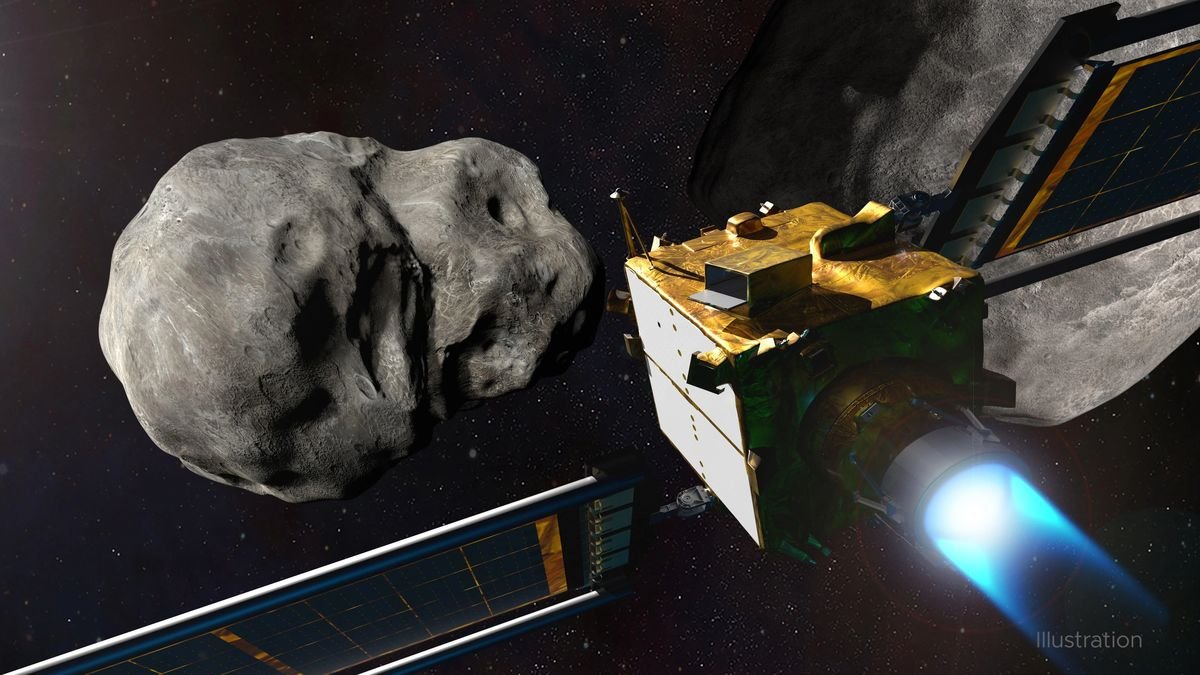NASA will attempt early Tuesday to see if it can deflect a non-threatening asteroid in a test of a planetary defense strategy.

NASA's DART spacecraft is already on a collision course with the tiny asteroid Dimorphous (Deformed). The reason; To see if they can divert him from his course. Here's how you can watch this hugely important asteroid deflection experiment.
The DART mission (short for Double Asteroid Redirection Test) is the first test of deflecting an asteroid through an impactor to see if they could deflect a potentially dangerous asteroid headed for Earth in the near future.
The orbit of the current asteroid Dimorphos is not in the slightest on a collision course with Earth, and will not be even if it deviates from its course, as it is very far from us.
But DART's epic crash into it could one day protect our planet from an approaching Earth asteroid. Much is riding on this astronomical encounter, and here's how you can watch it live.
The DART spacecraft is scheduled to hit its asteroid target on Tuesday at 02:14 AM. at dawn, Greek time (Monday 7:14 pm EDT).
NASA will broadcast the event live on YouTube channel of the space agency, in NASA application and site of the service. Or you can stay here and watch the video below via the NASA stream below.
Live coverage of the mission will begin on Tuesday at 01:00 AM. Greek time (EEST) and will include audio from NASA's mission control, live commentary, as well as images transmitted by the spacecraft's high-resolution camera, DRACO (Didymos Reconnaissance and Asteroid Camera for Optical Navigate).
Excitingly, NASA is also providing a silent live stream from DRACO set to begin at 12 midnight Monday through Tuesday at NASA media channel.
Το DART κινείται προς τον αστεροειδή με ταχύτητες που φτάνουν τα 14.000 μίλια την ώρα (22.530 χιλιόμετρα την ώρα). Μπορεί να υπάρχει μια μικρή υστέρηση μεταξύ αυτών των εικόνων και του τι συμβαίνει στο δωμάτιο ελέγχου, καθώς χρειάζονται περίπου οκτώ δευτερόλεπτα για να εμφανιστούν οι εικόνες στην οθόνη μετά τη λήψη και την επεξεργασία τους από τον έλεγχο αποστολής, σύμφωνα με τα λεγόμενα των αξιωματούχων της NASA στους δημοσιογράφους κατά τη διάρκεια informationς Τύπου.
So, even if mission control says “crash” or “signal loss,” it may take a few seconds to see what's reflected in NASA's audio coverage. And we assume you will see the sudden appearance of a blank screen, signifying the destruction of the spacecraft on the asteroid.
DART is NASA's first planetary defense test mission. His goal is a tiny one αστεροειδής known as Dimorphos, a mini-moon orbiting a slightly larger asteroid called Gemini. The 624-kilogram (1.376-pound) DART spacecraft, and theoretically that weight can dramatically alter the asteroid's orbit.
NASA is closely monitoring 28.000 nearby asteroids. While none of these asteroids currently pose a threat to Earth, we need a plan in case a massive space rock heads our way in the future. Gemini and its tiny companion Dimorphos are not a threat to Earth, and the test will not cause this system to become a threat to our planet. The pair is about 7 million miles (11 million kilometers) from Earth.
NASA will use ground-based telescopes to track Dimorphos' orbital path after it is struck by the spacecraft, as well as to measure the physical effects of the impact itself. Europe's LICIACube will also monitor the experiment with its two onboard cameras, LUKE and LEIA. The Hubble Space Telescope, the Webb Space Telescope and a camera on the Lucy spacecraft will also try to observe the event.
The European Space Agency (ESA) is planning a follow-up mission to the pair of space rocks. The space agency is scheduled to launch the Hera mission in 2024, which will encounter Gemini by 2026 to study the impact crater left by DART and any other changes made to the asteroid.
For now, DART's POV will hopefully provide a stunning view of Dimorph as it heads directly for the asteroid. It will be a sad end for the spacecraft, but data from the mission could eventually turn out to be the tools humans need to deflect a future dangerous asteroid.





